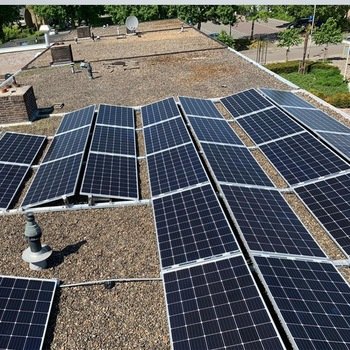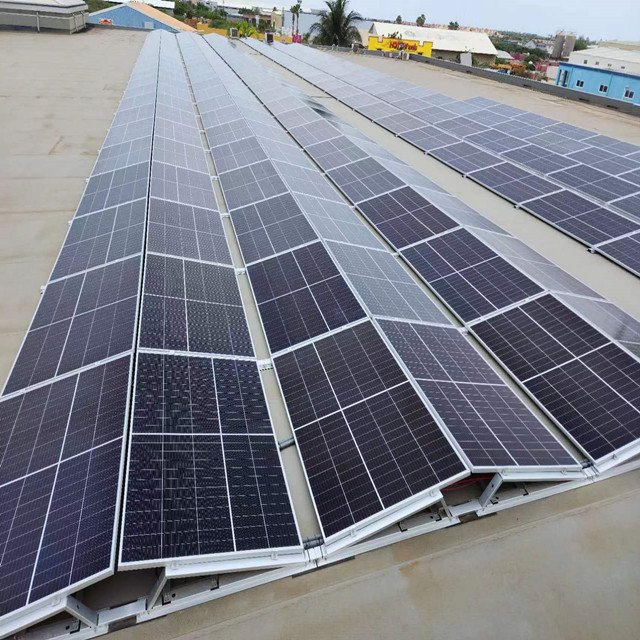-
2103 Room NO.322 Xinggang One Road,Haicang District,Xiamen Fujian,China

Quick Estimation Method for PV Roof mounting System Installation Capacity (Updated Version)
Table of Contents
Core Estimation Steps
1. Determine the Usable Rooftop Area
- Use on-site measurements or satellite imagery tools to obtain roof dimensions; subtract any obstructed areas (e.g., chimneys, vents, parapets).
- Example: For a 100 m² roof, after deducting obstructions, 85 m² remains usable.
2. Calculate the Number of PV Modules
- PV Module Dimensions: 2278 mm (L) × 1134 mm (W) × 30 mm (H)
- Actual Occupied Area (including spacing):
- Reserve 50 mm for installation spacing (along both length and width). Each module occupies about 2.35 m² (2.278 m × 1.034 m).
- Formula: Number of Modules=Usable Rooftop AreaOccupied Area per Module\text{Number of Modules} = \frac{\text{Usable Rooftop Area}}{\text{Occupied Area per Module}} Example: 85 m² ÷ 2.35 m² ≈ 36 modules.
3. Evaluate the Installed Capacity
- Single Module Power: 550 Wp (e.g., Longi Hi-MO 6 with ~22.5% efficiency).
- Total Installed Capacity: Total Capacity=Number of Modules×Power per Module\text{Total Capacity} = \text{Number of Modules} \times \text{Power per Module} Example: 36 modules × 550 Wp = 19.8 kWp.

Factors Affecting Installed Capacity
1. Rooftop Type and Installation Method
| Rooftop Type | Proportion of Installable Area | Formula |
|---|---|---|
| Flat Rooftop | 70% | Base area × 70% × 2.35 m²/module |
| Pitched Rooftop (double-slope) | 50% | Base area × 50% × 2.35 m²/module |
| Curtain Wall / Facade | 40%–64% | Facade area × Solar Illumination Factor × 0.4–0.64 |
2. Solar Resource Adjustment (China)
- Class I Regions (e.g., Tibet): Increase installed capacity by 10%–20% (high irradiation).
- Class IV Regions (e.g., Sichuan Basin): Recommend a 10%–20% downward adjustment (low irradiation).
3. Other Key Factors
- Load-Bearing Capacity: ≥30 kg/m² (including racking plus wind/snow load).
- Electrical Matching: Inverter capacity = installed capacity × 1.1 to 1.2.
- Policy Support: Local subsidies and feed-in tariffs have a direct impact on returns.
Professional Recommendations
- After the initial estimate, use professional software (PVsyst, HelioScope) for shading analysis and generation simulation.
- Final designs should be issued by qualified entities to ensure structural safety and maximize returns.
Simplified Formula: Installed Capacity (kWp)=Rooftop Total Area×Utilization Rate×550Wp2.35m2\text{Installed Capacity (kWp)} = \text{Rooftop Total Area} \times \text{Utilization Rate} \times \frac{550\text{Wp}}{2.35\text{m}^2}
Example: A 200 m² flat roof → 200 × 70% ÷ 2.35 × 0.55 ≈ 32.7 kWp.
Note: In actual projects, factors such as module tilt and shading must be considered; the above serves as a quick-reference estimate.








